Healing Through Art: What I Painted While I Was Unravelling
Some paintings are planned. These weren’t. Some artworks are created to celebrate, document, or decorate. These weren’t either.
These works were made in the middle of an unravelling. When my body was breaking down. When I didn’t know how much more I could carry. When silence wasn’t a practice but a condition I had no choice but to accept.
And it’s here, in the rawest places, that healing through art stopped being a metaphor and became something real. Not an outcome. Not a product. But a process of surviving myself. Of sitting still with things I couldn’t fix. Of giving shape to experiences that had none.
This is the story of what I painted during those months. It’s about grief. About surrender. About texture and presence, and slow repair. And it’s about what happens when you stop trying to make work that is good, and start allowing work that is true.
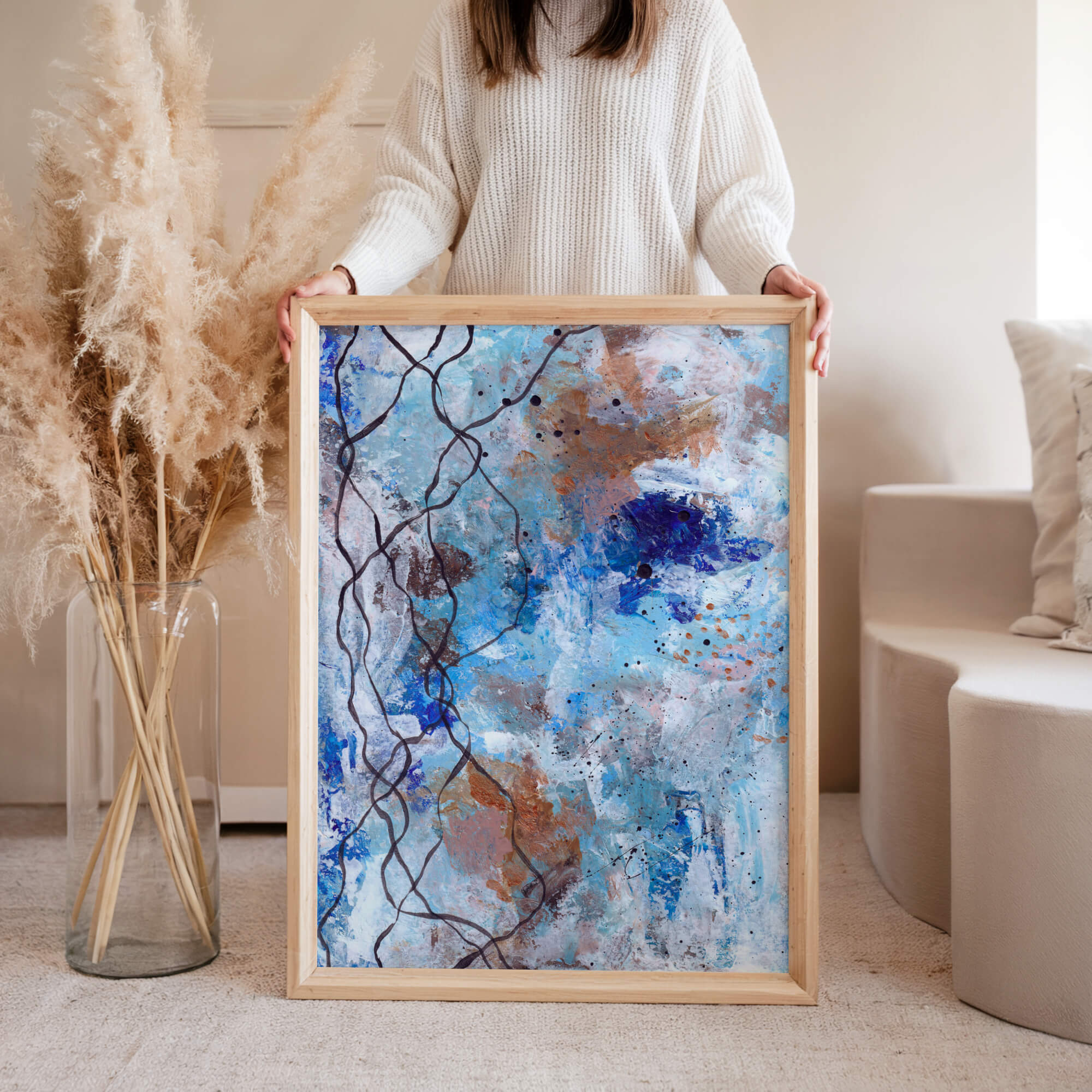
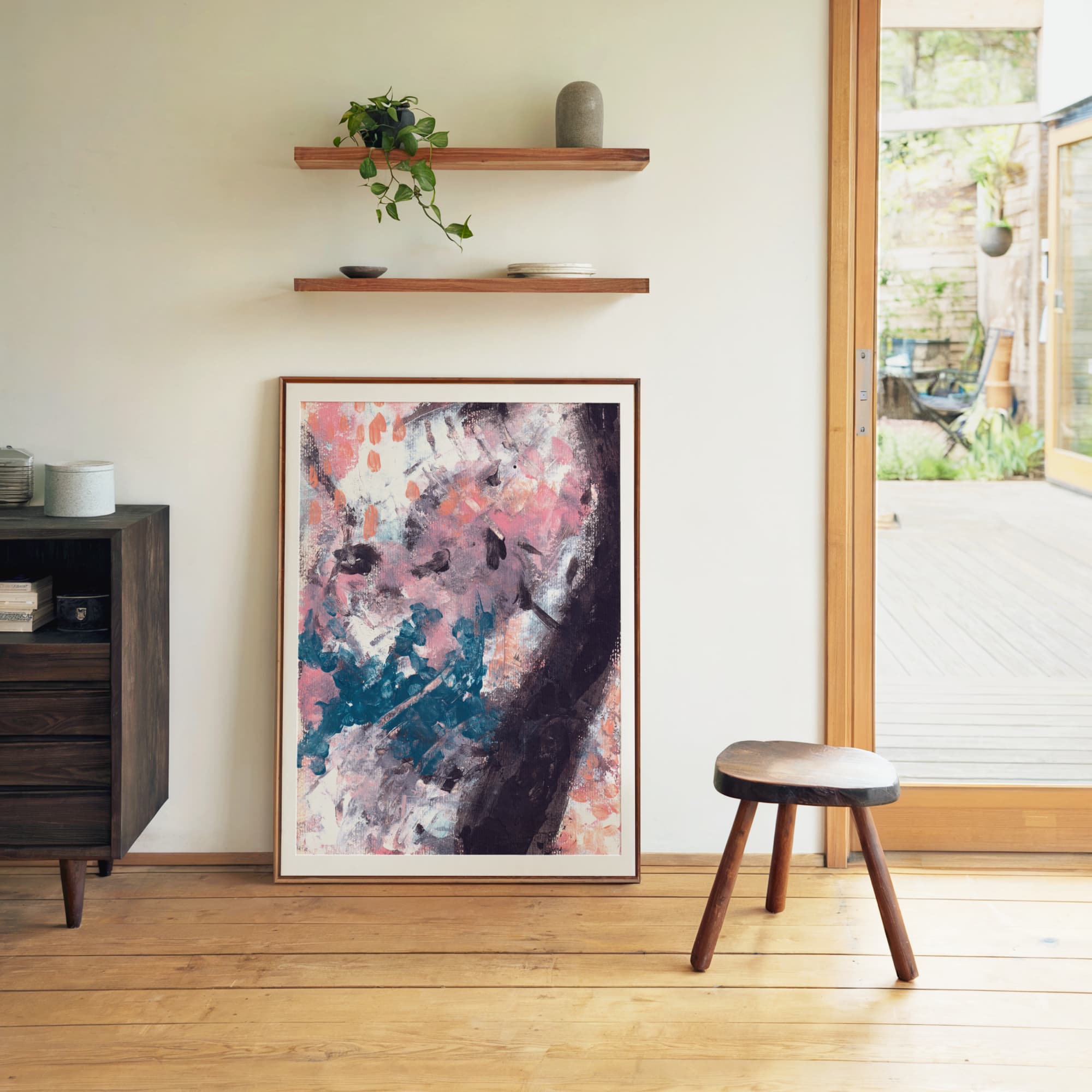
The Year My Body Gave Up On Me
There are injuries. And then there are moments when your body stops asking and starts insisting.
For me, it began with what seemed like a training tweak. A routine discomfort. Nothing that couldn’t be stretched or iced or worked through. I was still an athlete in my head. I believed pain was just another challenge to overcome.
But it kept getting worse. My heel started swelling. I couldn’t put pressure on it without wincing. Then came the rupture. The calf tear. And then, not long after, the surgery.
That operation was supposed to be the start of recovery. Instead, it marked the beginning of something I hadn’t prepared for, months of immobility, chronic pain, and uncertainty that stretched far beyond what I expected.
I couldn’t walk more than a few steps. Every part of my day had to be renegotiated. I couldn’t leave the house without pain. Well, I couldn’t leave at all. I couldn’t trust my own body to carry me across a room.
The physical injury was only the surface. What really cracked was the identity underneath it, the one that had powered through, that had used strength as a shield. And without it, I didn’t know who I was.
Why the Studio Became the Only Place I Could Breathe
When your life shrinks to the radius of a room, you start to notice what holds you.
My studio wasn’t fancy. But it was honest. It didn’t require explanation. It didn’t punish me for needing to slow down.
There were days I couldn’t stand at the art desk, so I worked sitting on the floor. There were days I couldn’t move much at all, so I stared at the canvas or paper and let it stare back.
There were weeks I painted with my foot elevated, pausing to stretch or cry between layers. The work didn’t flow. It didn’t follow a pattern. But it held me. It gave me something to touch that wasn’t pain.
The studio became a space without expectation. And that made it sacred.
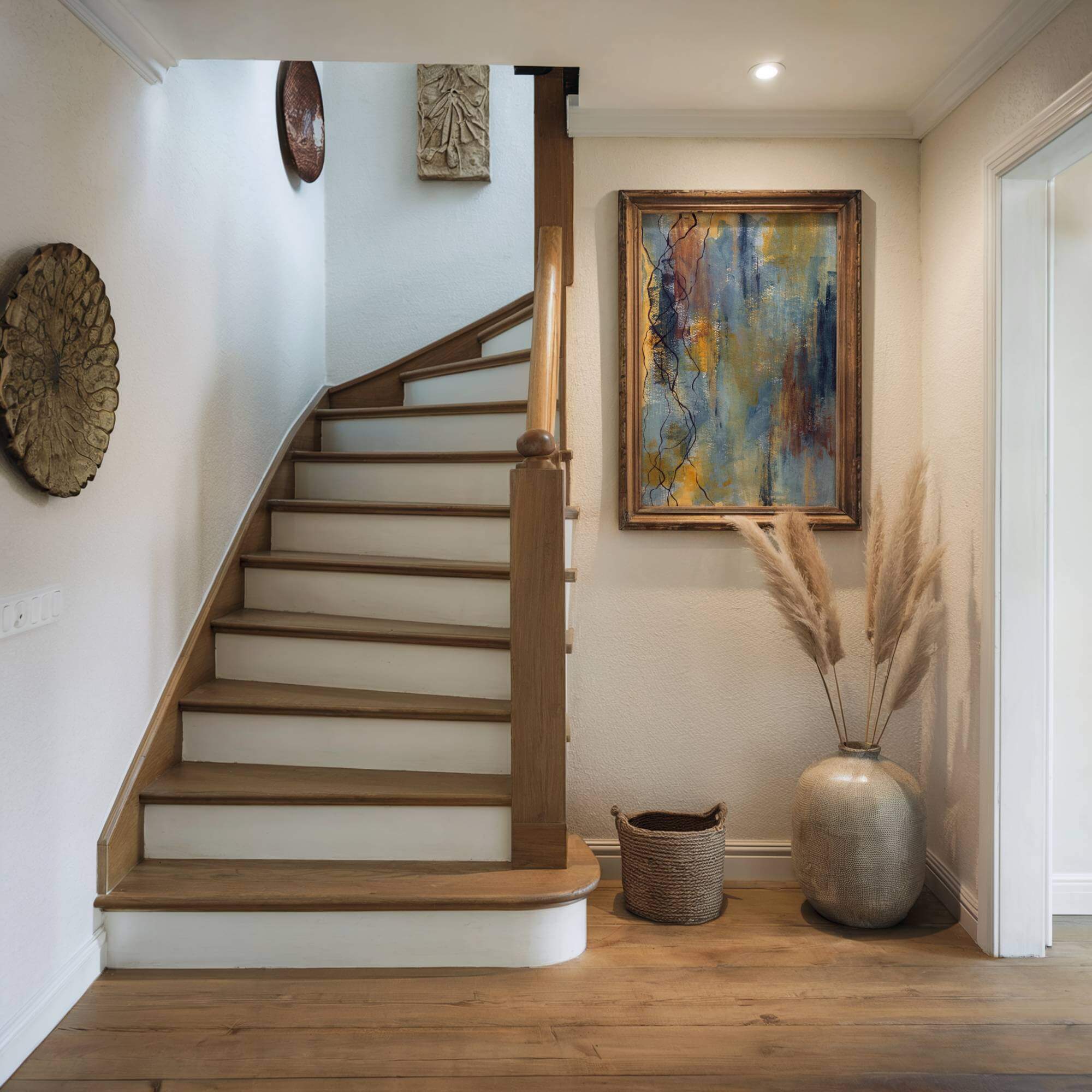
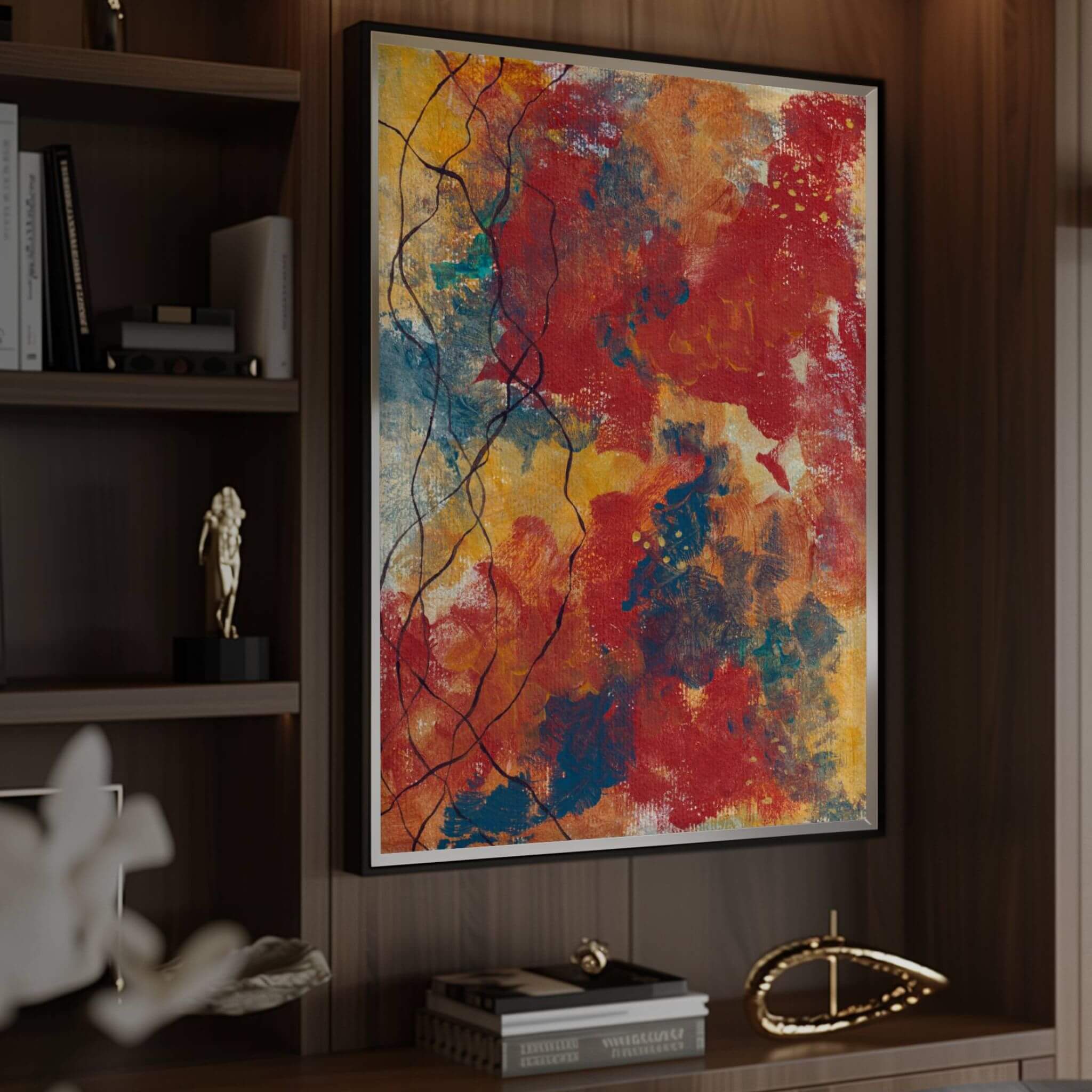
What Happens When You Stop Painting for Anyone Else
When you stop painting for a client, a critic, or an audience, the work changes.
You let go of polish. You let go of coherence. You start following sensation instead of rules.
I didn’t have a plan for any of the pieces I made that year. Some days, all I could do was mix a single colour and sit with it. Some canvases I returned to again and again without knowing if they were finished. Others felt done in a single sitting, not because they looked resolved, but because they felt honest.
That became the new measure. Not beauty. Not cleverness. Not even clarity. Just the truth.
Grief Is Not a Disruption, It’s a Studio Assistant
Grief doesn’t care about your deadlines. It doesn’t fit into schedules. It doesn’t wait until you’ve finished the practical stuff. It arrives. And it stays. And it alters everything.
In the studio, grief wasn’t something to work through. It was something to work with.
I painted while grieving the loss of movement. The loss of independence. The uncertainty about whether I would recover. Some days, that grief was soft. Some days it was rage.
I didn’t filter any of it out. I let it live in the colours I chose, in the density of each layer, in the friction of materials pushed past what felt tidy or harmonious.
The work didn’t try to solve grief. It just made space for it to exist.
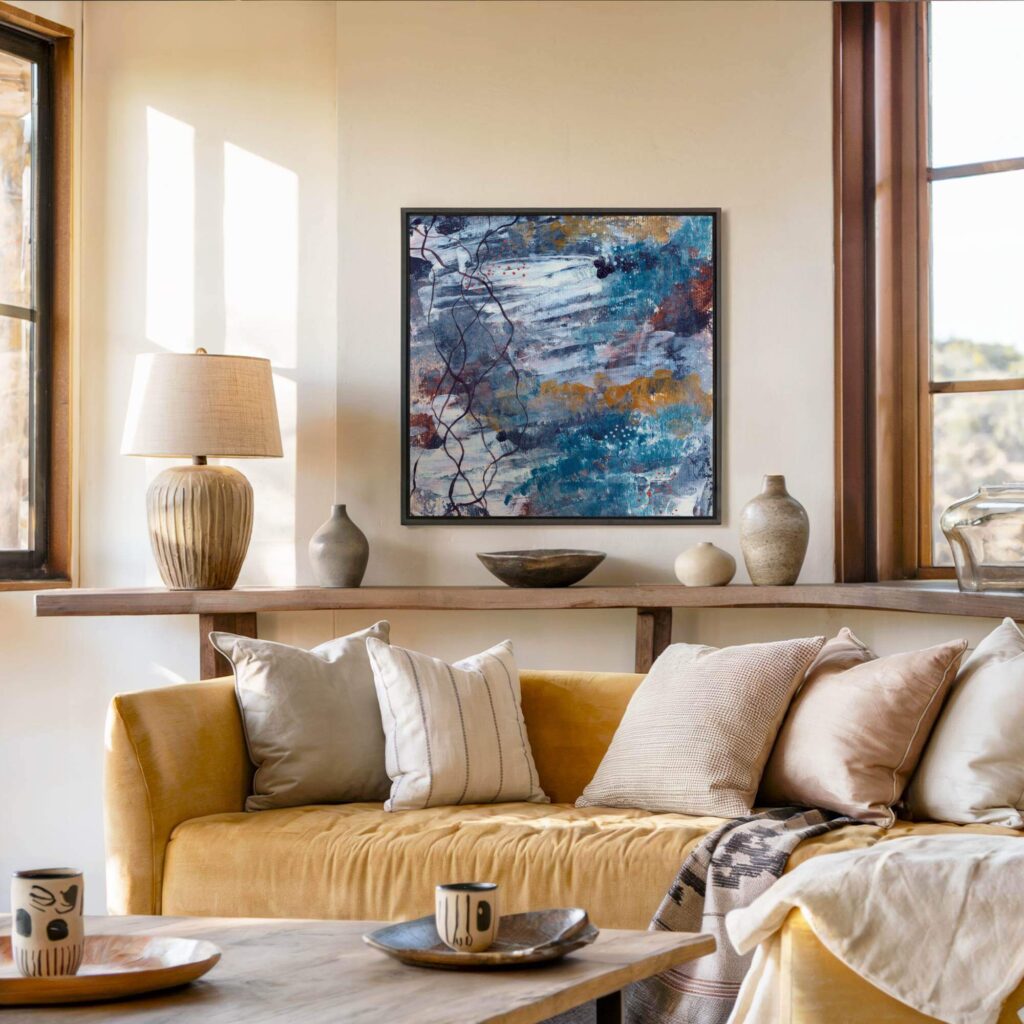
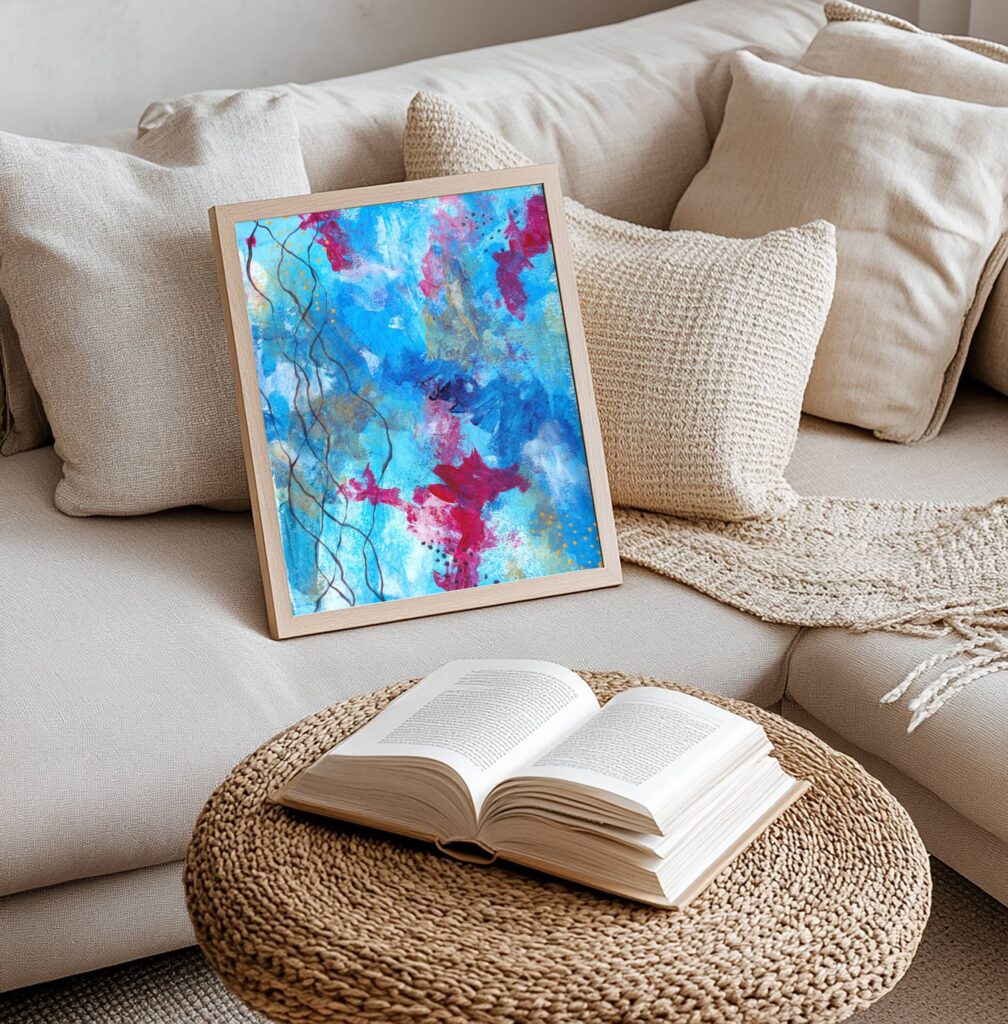
Texture Became My Language
I’ve always worked with texture. But during this period, it became more than a visual choice. It became a necessity.
My body felt raw. Unstable. Like it couldn’t hold its shape. Texture became a way to give form to that.
I started using thicker mediums. I pushed paint until it cracked. I scraped it back. I let layers build unevenly. I repeated movements until they lost precision and became muscle memory.
I needed the surface to speak back. Smoothness felt dishonest. Clean lines felt like pretending. So I gave myself permission to disrupt everything.
That disruption became its own language. A way of saying: this is broken, but it’s still here.
The Unspoken Dialogue Between Body and Canvas
When pain becomes your daily companion, you stop trying to ignore it. You start working with it. The canvas became a collaborator. Not just a surface, but a listener.
My limitations informed the work. They dictated the rhythm. When I had energy, I painted long and hard. When I didn’t, I worked in silence. I let the body call the shots.
Sometimes the marks were slow and careful. Sometimes they were abrupt. But they all came from the same place: an effort to be honest. To stop pretending.
Each painting became a record of that conversation. Between what I felt and what the canvas could absorb.
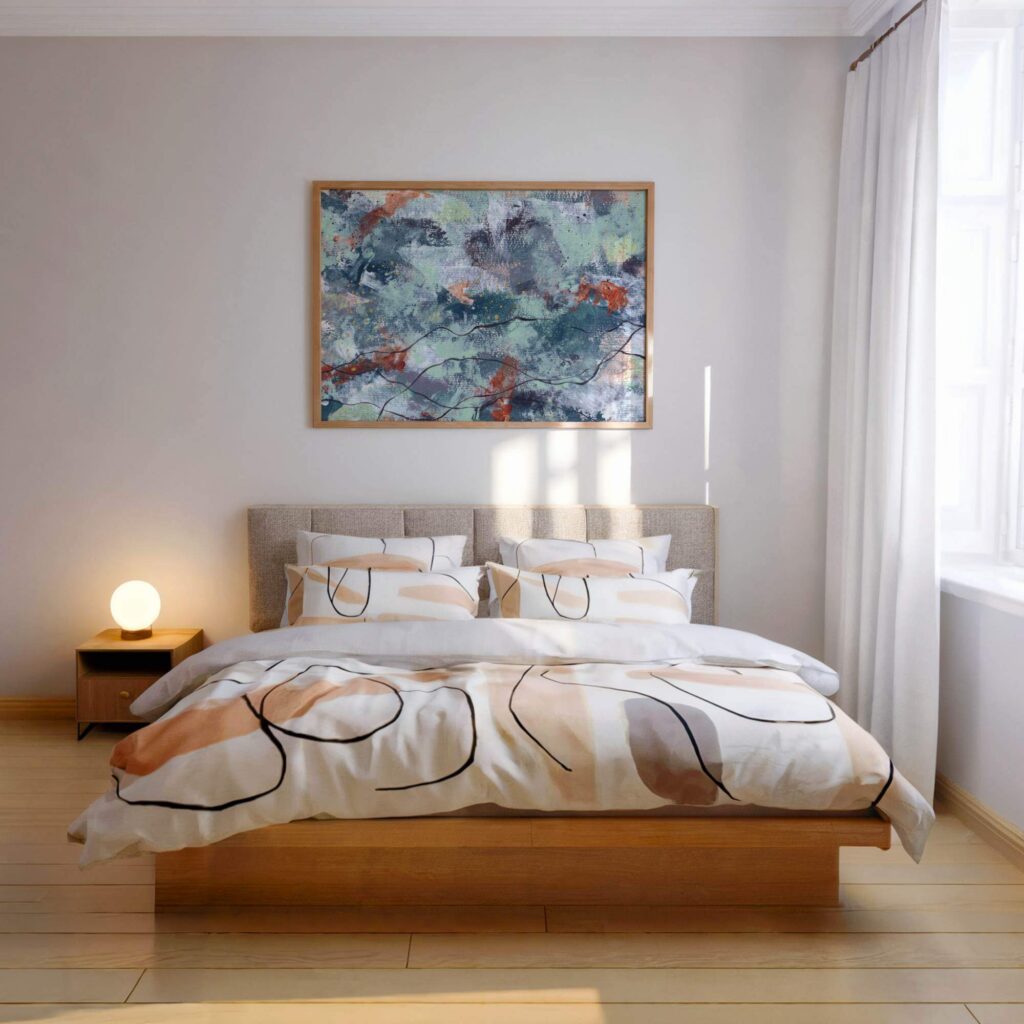
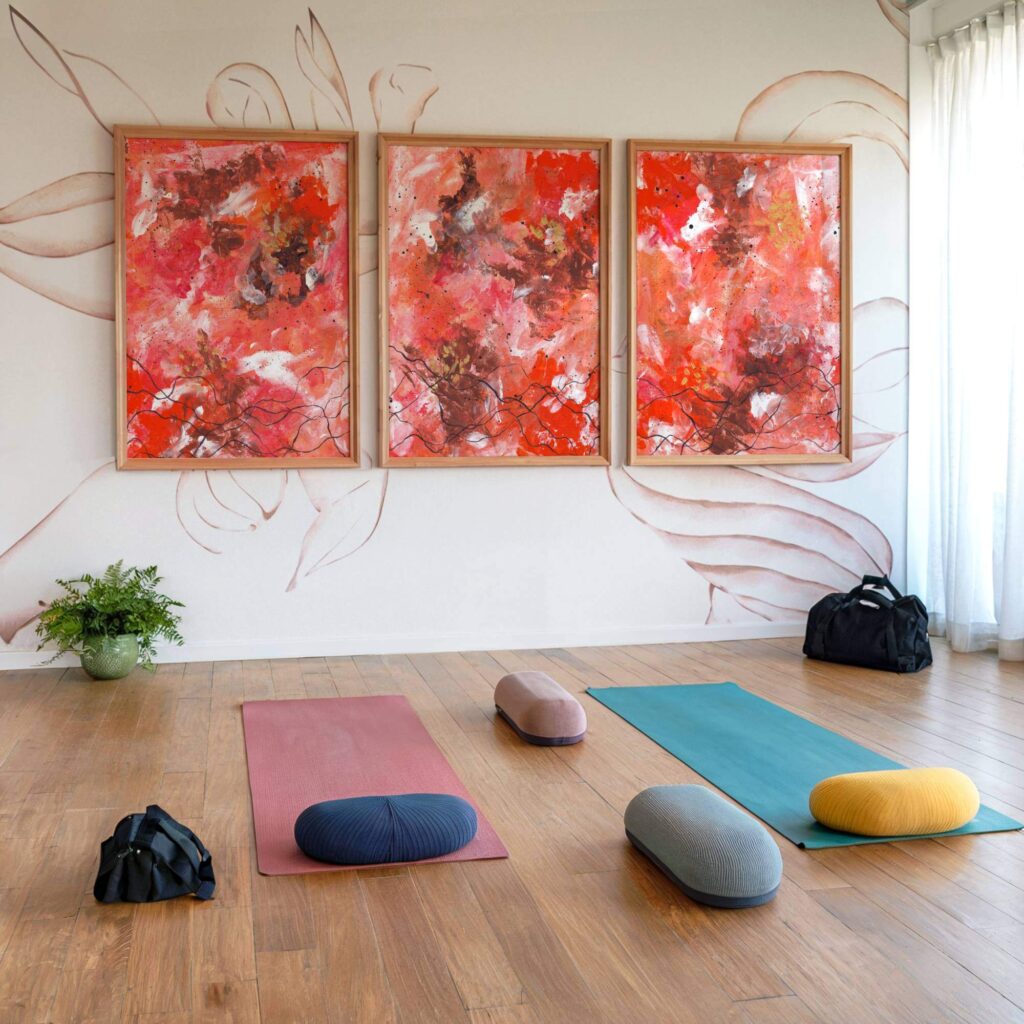
Why These Pieces Were Never Meant to Be Seen
I didn’t make this work for a collection. I didn’t even document it properly at first.
I made it because I didn’t know what else to do. Because everything else felt unreachable. Because creating was the only form of movement I had left.
Over time, I began to see something in these pieces I hadn’t planned. They didn’t just mark my grief. They marked my decision to stay present inside it.
They weren’t about pain. They were about staying. And that’s why I knew they needed to be shared—not as polished artefacts, but as fragments of something honest.
Stillness Is a Force, Not a Flaw
Stillness is so often framed as a lack. As an absence. But I came to see it as a source of power.
Stillness stripped away the noise. It showed me what remained when nothing else was possible. It became a kind of discipline, one I hadn’t chosen, but had to learn.
And in that stillness, the work became clearer. Not prettier. Not more marketable. But more alive. It carried the weight of what I was learning to hold.
I didn’t need to perform. I needed to remain. That was the work.
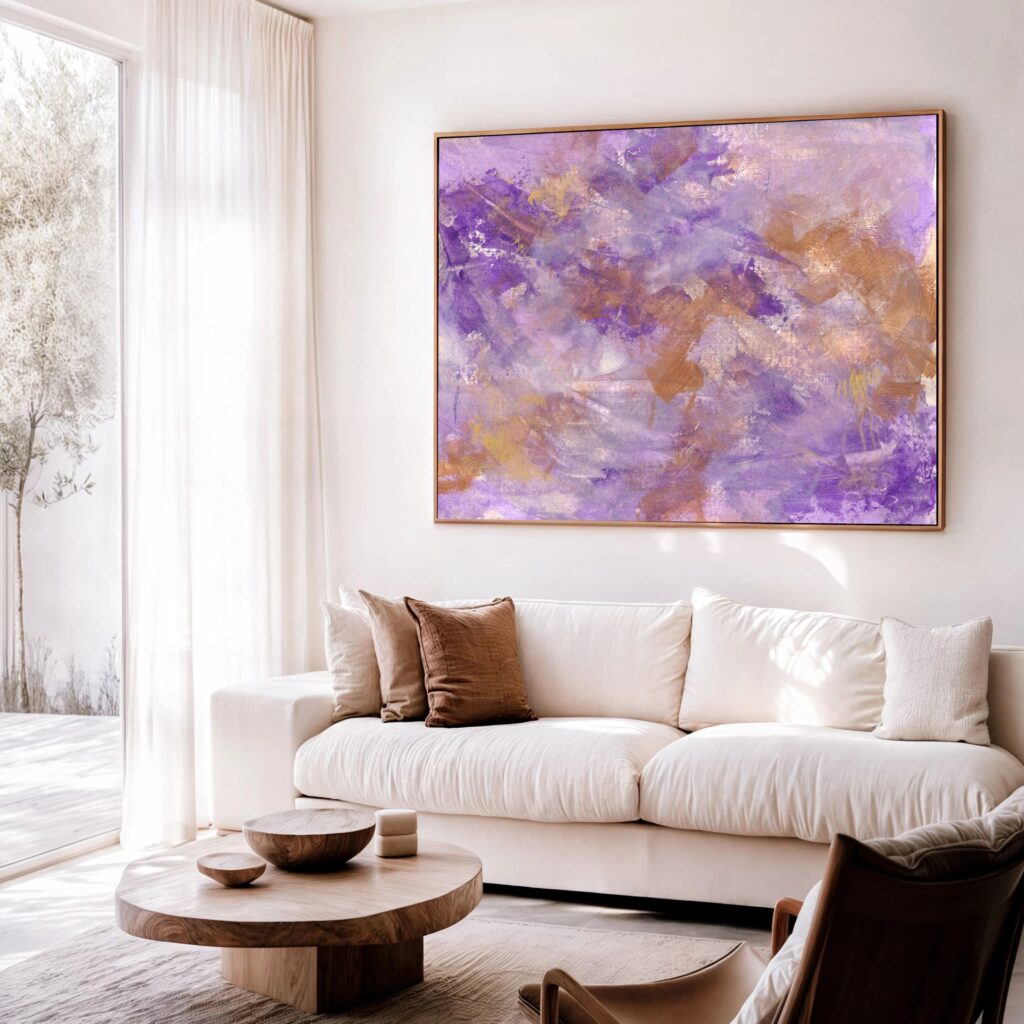
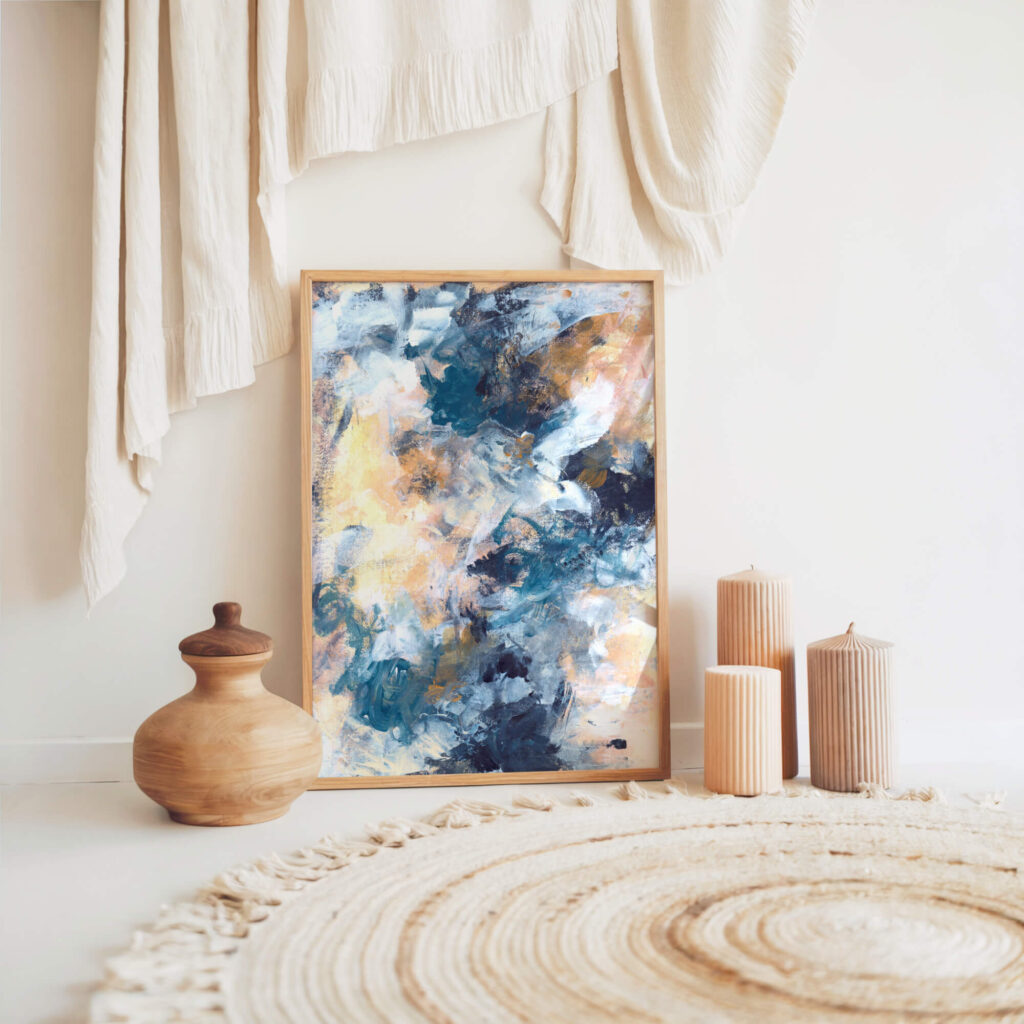
What I Know Now That I Didn’t Then
This season broke me open in ways I’m still understanding.
But it also taught me that value doesn’t come from visibility. That meaning isn’t measured in momentum. That depth often comes in the pause.
I thought slowing down would cost me everything. Instead, it gave me a kind of clarity that speed never could. The kind that lives in the work now. Quietly. Persistently.
I didn’t know these paintings would matter. But they do. Because they came from a place I couldn’t fake.
Why I’m Finally Letting You See Them
It took time to be ready. Not because I was ashamed, but because I needed to be sure I wasn’t sharing them for validation.
These paintings weren’t made for a spotlight. They were made in the dark. In the early hours. In the days when I didn’t speak to anyone. They carry that energy.
But I also know what it means to see something that reflects your own private chaos. To feel less alone in your own grief. To know someone else stayed with it long enough to make something.
So I’m offering these pieces for my book readers, Fragments, not as decoration, but as presence. As a soft invitation.
My Offerings
Whether you’re a private collector, a wellness-focused brand, or a designer sourcing for a high-calibre project, I offer art that resonates deeply and subtly.
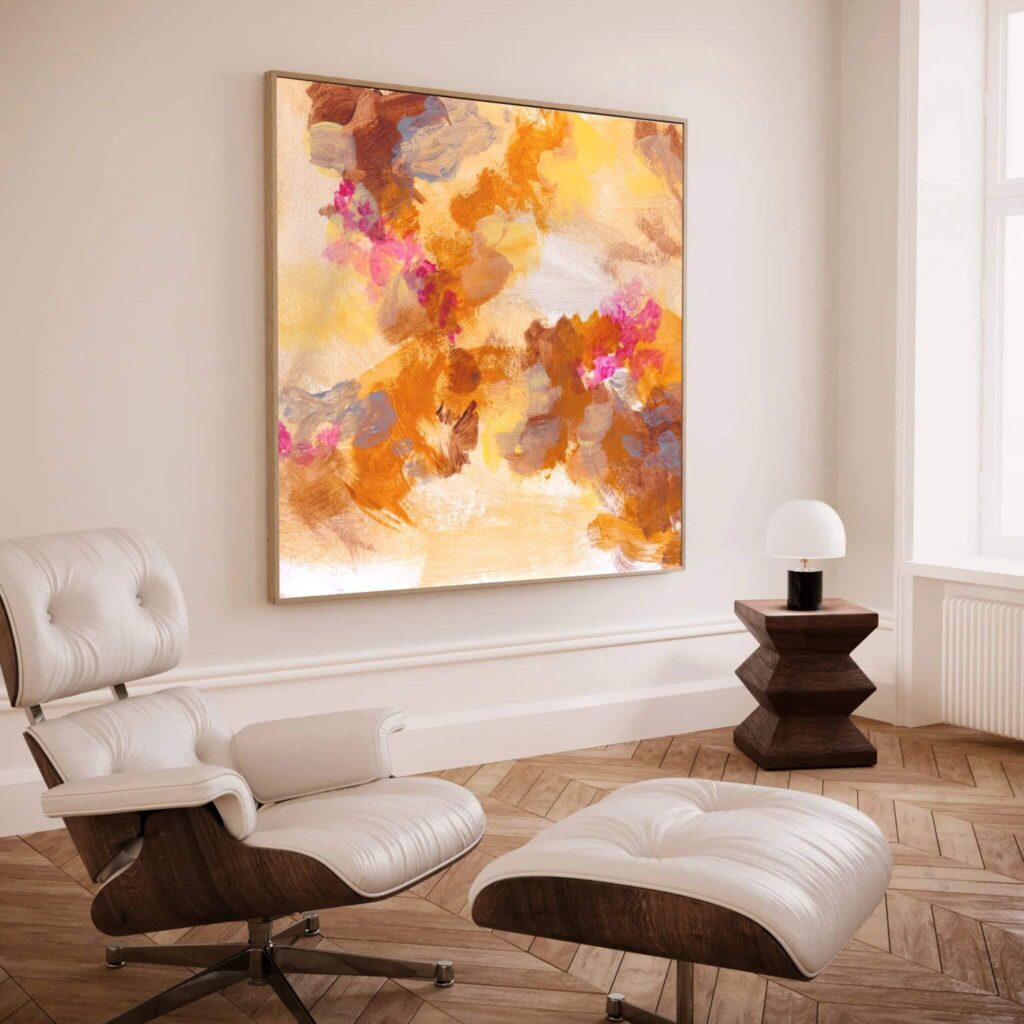
Collector's Vault
Canvas prints from the archive, made with emotional resonance and sustainable materials for spaces seeking depth.

Capsule Commission
Created privately, one at a time, through stillness and reflection. Limited spaces each season to preserve depth and intimacy.
The Last 10
Ultra-limited, hand-embellished editions. No more than ten will ever exist. Made to ground, steady, and hold presence at the highest tier.
Conclusion
Healing through art is not a metaphor. It’s a physical process. A psychological one. A spiritual one. And sometimes, it’s the only one that makes sense.
These paintings aren’t perfect. They’re not resolved. But they’re real.
They held me when I couldn’t hold myself. And if they can offer even a fraction of that to someone else, they’ve already done enough.
You can read the book that emerged from this period here https://vikithorbjorn.art/stillness-is-a-weapon
Or access the Fragments collection https://vikithorbjorn.art/writingroom/
Because art doesn’t have to be finished to be meaningful. Sometimes, it just needs to be true.
